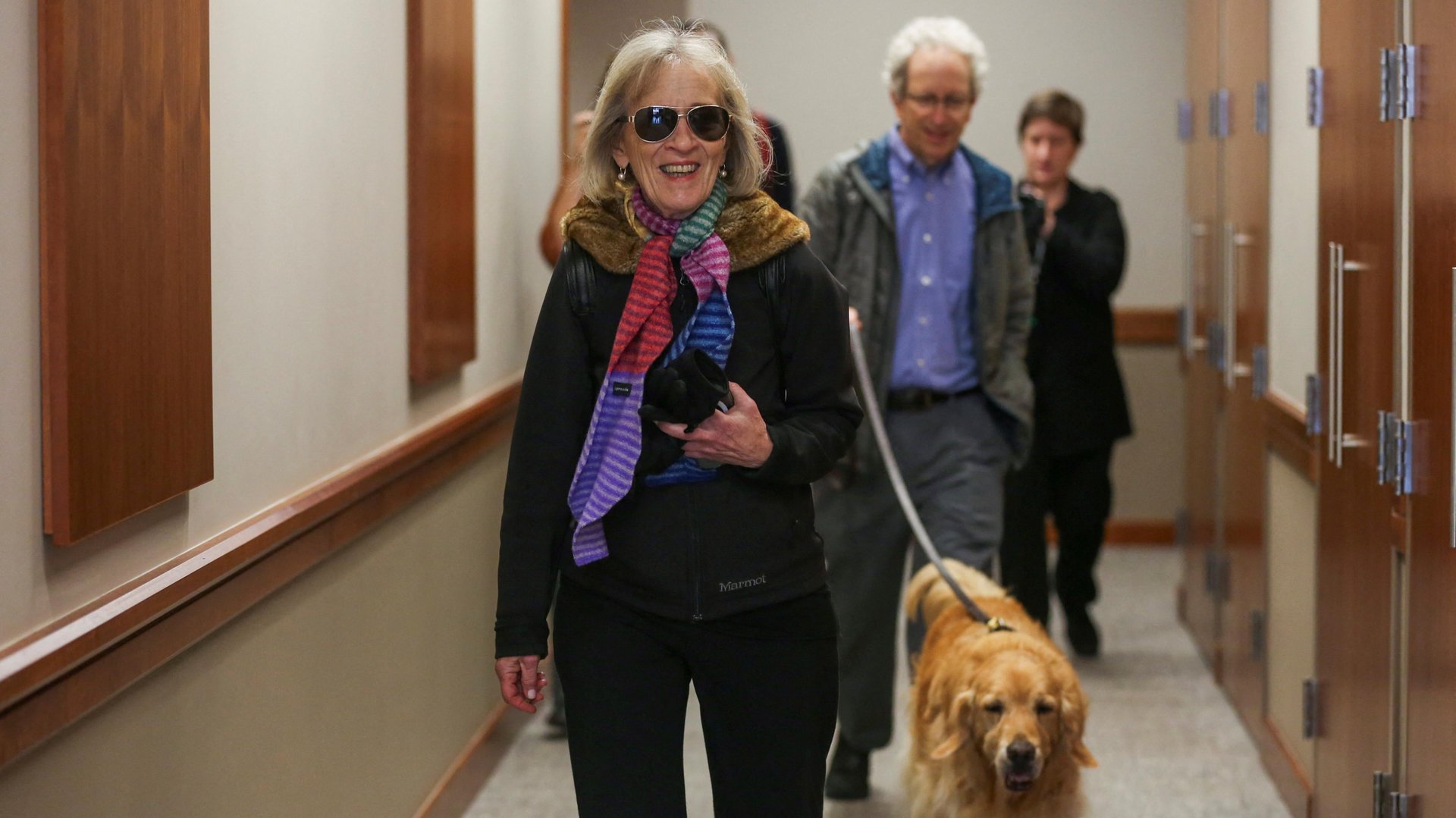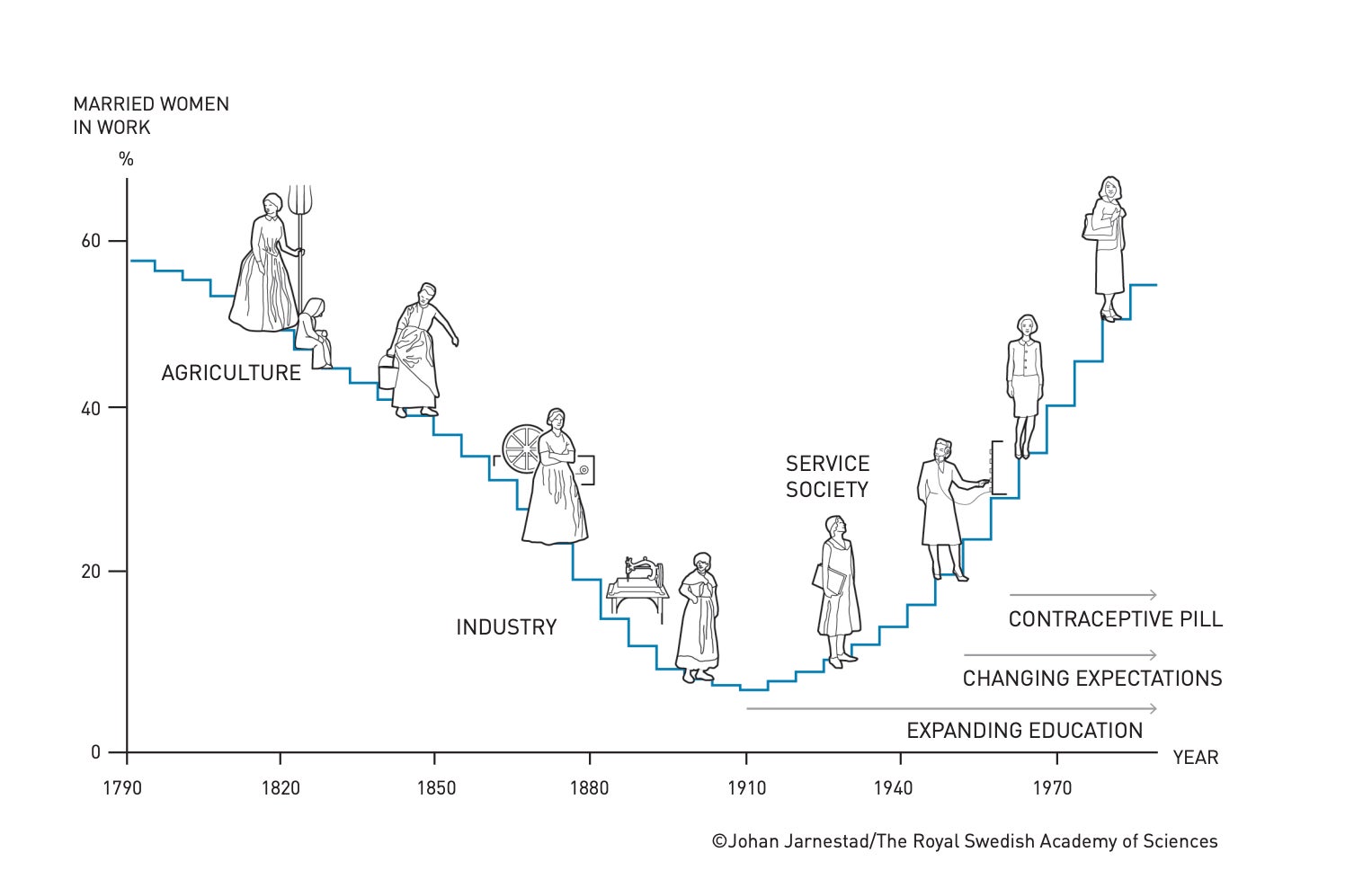The Nobel prize in economics finally recognized the economic power of women’s work
Harvard economist Claudia Goldin won for providing the “first comprehensive account of women’s earnings and labor market participation through the centuries.”

This year’s Sveriges Riksbank Prize in Economic Sciences in Memory of Alfred Nobel went to Claudia Goldin for her work acknowledging the gender gap in the labor market, on Monday (Oct. 9).
Suggested Reading
The Royal Swedish Academy of Sciences awarded Goldin the prestigious prize for providing the “first comprehensive account of women’s earnings and labor market participation through the centuries.” She’s poised to receive 11 million Swedish kronor ($1 million) as prize money for her rearview study.
Related Content
The Harvard University economist trawled 200 years of archival data from the US to discover that female participation in the labor market did not move linearly upwards but instead formed a U-shaped curve. As society changed from agrarian to industrial to services-oriented, social norms around married women working changed, too.
While participation is climbing, the gap remains pronounced when it comes to pay. Historically, women were paid less due to different educational and occupational choices. But during the 20th century, women’s education levels continuously increased, even surpassing men in some high-income nations. Still, they’re paid less even with the same qualifications and at the same job roles, and the problem largely arises with the birth of the first child.
Charted: Women’s place in the workplace

Surprising fact: Birth control pills helped labor planning
Access to the contraceptive pill, also referred to as the birth control pill, played a key role by “offering new opportunities for career planning” since the late 1960s, Goldin’s research has proven.
The medicine’s availability to young, unmarried women, helped in two ways: “lowering the costs of long‐duration professional education for women and raising the age at first marriage.” Consequently, they could delay childbirth and childcare.
Quotable: Lack of economic opportunity for women
“If women do not have the same opportunity to participate in the labour market, or they participate on unequal terms, labour and expertise are wasted. It is economically inefficient for jobs not to go to the most qualifed person and, if pay differs for performing the same work, women may be disincentivised to work and have a career.”
—The Royal Swedish Academy of Sciences
One more thing: Goldin’s win for her gender
The first woman to be tenured in Harvards economics department, Goldin is only the third woman to win the prize, after Elinor Ostrom in 2009 and Esther Duflo in 2019. While Ostrom and Duflo shared their prizes with male co-researchers, Goldin is the first woman to score a solo win among the 93 laureates to win the award since 1969.
In a post-win interview, Goldin referred to herself as a “third generation Nobel,” citing that she was the student of 1993 winner Bob Fogel, who studied under 1971 awardee Simon Kuznets.
